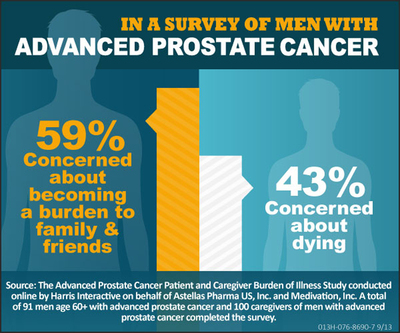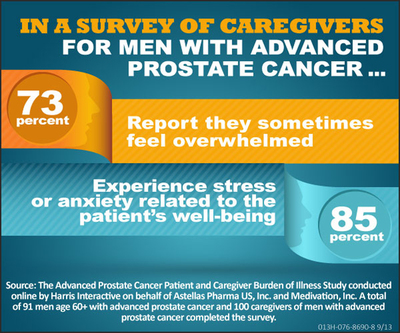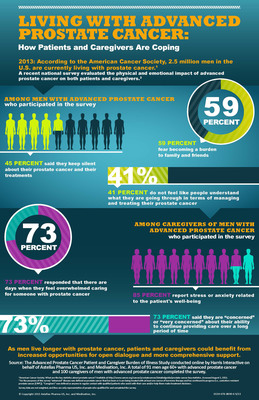Breakthrough Melanoma Treatment Hailed as Key to Cure
By Beth Greenfield, Shine Staff | Healthy Living – 2 hours 49 minutes ago
Patients with advancedmelanoma patients may now survive for up to 10 years longer than before, according to new findings about the drug ipilimumab, which first came on the market in 2011. Scientists are finding that patients who respond to the medication are living much longer than originally anticipated, and the drug is being touted as the key to a cure for skin cancer.
More on Yahoo Shine: Why Are So Many Women Still Getting Skin Cancer?
"This is a major breakthrough," Tim Turnham, PhD, executive director of the Melanoma Research Foundation, told Yahoo Shine about the announcement, which came over the weekend at the 2013 European Cancer Congress in Amsterdam. Though Turnham was careful to note that the drug represents "nothing close to being a cure," he said that it was moving the world closer to one than ever before.
"Melanoma has been a fortress, but we're beginning to see a crumbling of its foundations," he said, adding that, according to these new findings, "at least half of those [with advanced melanoma] will probably be cured within three to five years. It's shocking."
Stephen Hodi, director of the Melanoma Treatment Program at Dana-Farber Cancer Institute in Boston, headed the research behind the latest development, conducting the largest analysis yet of ipilimumab and overall survival in melanoma patients.
“These results are important to healthcare providers and patients with advanced melanoma since they provide a perspective on long-term survival for ipilimumab patients who are alive after three years of treatment,” Hodi said in a press release. “Our data, which represent the longest follow-up of the largest numbers of patients on any globally approved melanoma therapy, will provide a benchmark for future medicines for advanced melanoma.”
More on Yahoo: New Drug for Advanced Melanoma Shows Positive Results
While melanoma is not the most common type of skin cancer, it is the most fatal, killing an estimated 8,790 people in the United States annually, according to the Skin Cancer Foundation. It's also the No. 1 cancer diagnosis for women in their 20s, and it's on the rise. If the cancer is recognized and treated early, it's almost always curable; if not, it can spread to other parts of the body, where it becomes hard to treat and until now was almost always fatal, with most patients living less than 18 months after diagnosis. The American Cancer Society estimates that about 120,000 new cases of melanoma in the United States are diagnosed in a year.
The treatment, ipilimumab, also called “ipi,” and sold in this country as Yervoy, is an antibody that activates the immune system to fight melanoma skin cancer.
It was already known that some patients treated with ipi could survive for long stretches. Because of that, Hodi joined with colleagues from Germany, France and the United States to collect data on a total of 4,846 patients from various studies, aiming to look more closely at survival rates.
Ipi was the first new melanoma drug approved in many years, Turnham explained—and it was the first ever to show an impact on overall survival rates in melanoma patients, which fueled much hope. "Patients were clamoring like crack addicts on the street," he recalled. "And I know people who were literally at death's door who are alive now because of the drug." But, he explained, not everyone responds to the drug; in fact, there is a 20 percent or greater chance that it will have no effect on a patient.
But now, encouraged by the latest hopeful news, scientists can continue to work on ways to get a better rate of response to the drug. That's important not only so that melanoma patients can have a greater chance of living to see a cure, but also so that they can simply live, Turnham said.
"If a man has young children and has been alive for six years [with the cancer], he's seen them go from being first-graders to being in middle school," he noted. "There are all those milestones you wouldn't have otherwise had."
More on Yahoo Shine: Why Are So Many Women Still Getting Skin Cancer?
"This is a major breakthrough," Tim Turnham, PhD, executive director of the Melanoma Research Foundation, told Yahoo Shine about the announcement, which came over the weekend at the 2013 European Cancer Congress in Amsterdam. Though Turnham was careful to note that the drug represents "nothing close to being a cure," he said that it was moving the world closer to one than ever before.
"Melanoma has been a fortress, but we're beginning to see a crumbling of its foundations," he said, adding that, according to these new findings, "at least half of those [with advanced melanoma] will probably be cured within three to five years. It's shocking."
Stephen Hodi, director of the Melanoma Treatment Program at Dana-Farber Cancer Institute in Boston, headed the research behind the latest development, conducting the largest analysis yet of ipilimumab and overall survival in melanoma patients.
“These results are important to healthcare providers and patients with advanced melanoma since they provide a perspective on long-term survival for ipilimumab patients who are alive after three years of treatment,” Hodi said in a press release. “Our data, which represent the longest follow-up of the largest numbers of patients on any globally approved melanoma therapy, will provide a benchmark for future medicines for advanced melanoma.”
More on Yahoo: New Drug for Advanced Melanoma Shows Positive Results
While melanoma is not the most common type of skin cancer, it is the most fatal, killing an estimated 8,790 people in the United States annually, according to the Skin Cancer Foundation. It's also the No. 1 cancer diagnosis for women in their 20s, and it's on the rise. If the cancer is recognized and treated early, it's almost always curable; if not, it can spread to other parts of the body, where it becomes hard to treat and until now was almost always fatal, with most patients living less than 18 months after diagnosis. The American Cancer Society estimates that about 120,000 new cases of melanoma in the United States are diagnosed in a year.
The treatment, ipilimumab, also called “ipi,” and sold in this country as Yervoy, is an antibody that activates the immune system to fight melanoma skin cancer.
It was already known that some patients treated with ipi could survive for long stretches. Because of that, Hodi joined with colleagues from Germany, France and the United States to collect data on a total of 4,846 patients from various studies, aiming to look more closely at survival rates.
Ipi was the first new melanoma drug approved in many years, Turnham explained—and it was the first ever to show an impact on overall survival rates in melanoma patients, which fueled much hope. "Patients were clamoring like crack addicts on the street," he recalled. "And I know people who were literally at death's door who are alive now because of the drug." But, he explained, not everyone responds to the drug; in fact, there is a 20 percent or greater chance that it will have no effect on a patient.
But now, encouraged by the latest hopeful news, scientists can continue to work on ways to get a better rate of response to the drug. That's important not only so that melanoma patients can have a greater chance of living to see a cure, but also so that they can simply live, Turnham said.
"If a man has young children and has been alive for six years [with the cancer], he's seen them go from being first-graders to being in middle school," he noted. "There are all those milestones you wouldn't have otherwise had."












